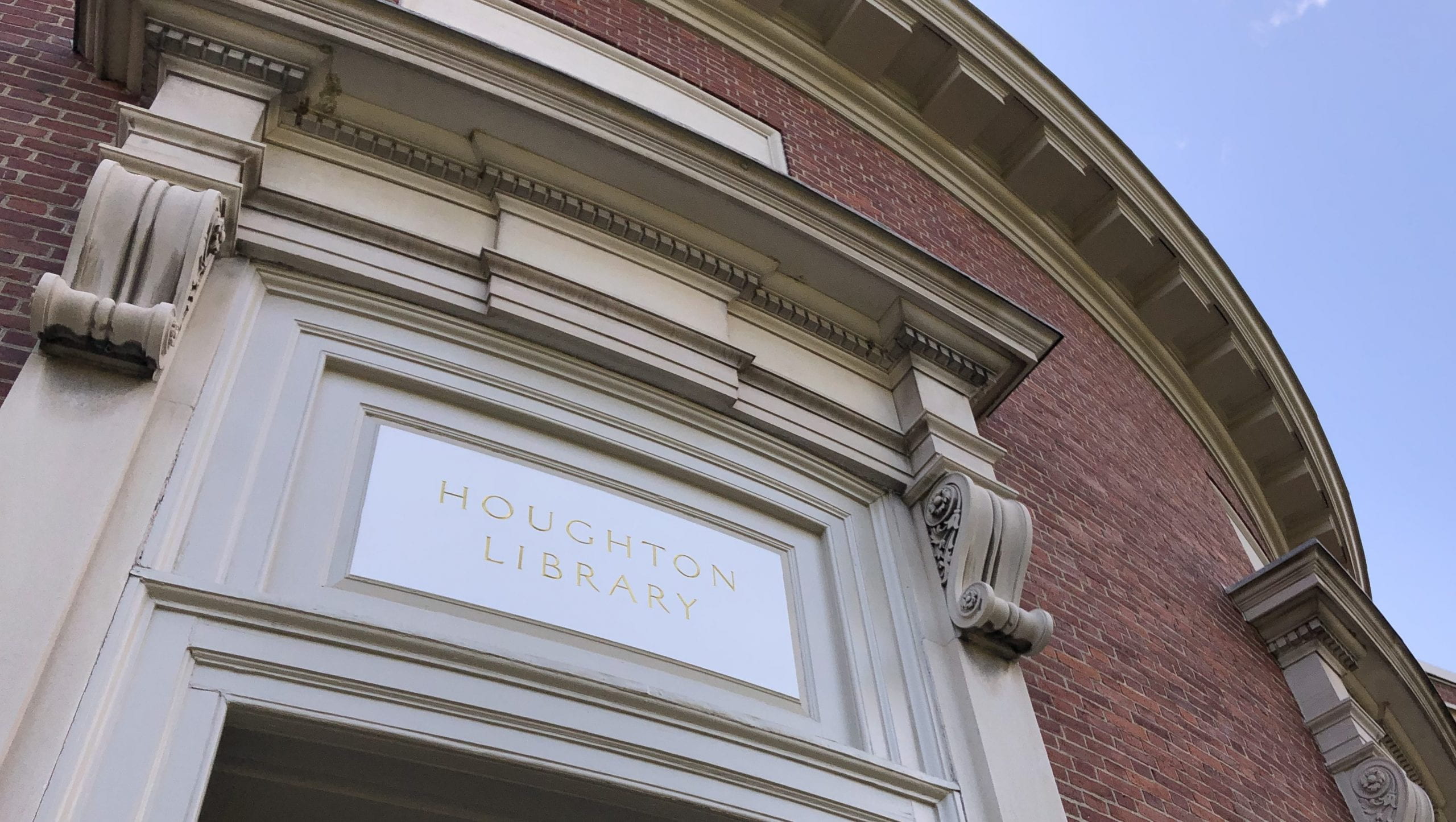![Alexandre Benois. Arap. Azbuka v kartinakh. [Saint Petersburg, 1904.] Typ 958.05.2025 (B)](http://blogs.law.harvard.edu/houghton/files/2014/02/Typ-958.05.2025-B-Arap-e1393133302479-136x150.jpg) If you watched the opening ceremony of the Winter Games, then you recall being given a sweeping lesson in Russian culture brought to you by letters from the Cyrillic alphabet. The pageant’s producer, Konstantin Ernst, made no secret of his inspiration: at the start of the program opened next to a dreaming girl named Lubov was an alphabet book by Alexandre Benois.
If you watched the opening ceremony of the Winter Games, then you recall being given a sweeping lesson in Russian culture brought to you by letters from the Cyrillic alphabet. The pageant’s producer, Konstantin Ernst, made no secret of his inspiration: at the start of the program opened next to a dreaming girl named Lubov was an alphabet book by Alexandre Benois.
Benois designed the azbuka to impress his own children. But Philip Hofer, founding curator of the Department of Printing and Graphic Arts, guessed further that Tsar Nicholas II had commissioned the primer in anticipation of the birth of his son and heir, Alexei, in August 1904. This theory, while unproved, makes Houghton’s copy especially thrilling since it once belonged in the imperial nursery; its former owner was the tsar’s daughter, the Grand Duchess Anastasia, who it is believed learned her letters from it.
There is little evidence, however, apart from young Anastasia’s signature, that the book was much used. It was in pristine condition when Hofer stumbled upon it lying on the floor of a New York City hi-rise in 1932. A Soviet-sympathizing bookseller had piled “the books of those little brats” (referring to the tsar’s children) in a corner of his crowded office. When Hofer offered him a check, having little cash on hand in that difficult Depression year, the man balked and prophesied the imminent collapse of the capitalist system. Insistent he be paid in cash, he sold the book to Hofer for three dollars.
Like the impressive display in Sochi, Benois’ sources are eclectic, and yet the general character of the book is distinctly Russian. Its scenes are lifted from the Bible and exotic lands as well as from Russian fairy tales and traditional childhood games. Each page brims with drama of the sort not often associated with the drilling of conventional alphabets, where letters are paired with flat objects. (You won’t find A is for apple here.) In all, thirty-six letters are represented on thirty-four chromolithographed leaves, each illustrated in exquisite detail.
A introduces Arap, a Moorish character who accompanies the book’s young readers through the alphabet. Ever the scenic artist, Benois depicts him appearing from behind a parted curtain, setting up the plates to follow as a series of stage pictures.
Arap reappears in the final illustration scribbling: “I learned how to reed [corrected] read and write Rusian [corrected] in Russian”—the fact celebrated by burning incense or fimiam. Those familiar with Benois’ later work for Diaghilev’s Ballets Russes will perhaps recognize Arap from Petrouchka (1911).
You can read more about Benois’ Alphabet in a back issue of the Harvard Library Bulletin where it was reprinted for the first time in 1979.
Thanks to Dale Stinchcomb, Curatorial Assistant in the Harvard Theatre Collection, and Irina Klyagin, Rothschild Project Archivist, for contributing this post.

![Alexandre Benois. Azbuka v kartinakh. [Saint Petersburg, 1904.] Typ 958.05.2025 (B), front cover](http://blogs.law.harvard.edu/houghton/files/2014/02/Typ-958.05.2025-B-cover-238x300.jpg)
![Alexandre Benois. Arap. Azbuka v kartinakh. [Saint Petersburg, 1904.] Typ 958.05.2025 (B)]](https://sites.harvard.edu/houghton-library/files/2014/02/Typ-958.05.2025-B-Arap.jpg)
![Alexandre Benois. Stars (left) and Toys (right). Azbuka v kartinakh. [Saint Petersburg, 1904.] Typ 958.05.2025 (B)](http://blogs.law.harvard.edu/houghton/files/2014/02/Typ-958.05.2025-B-stars-and-toys-1024x643.jpg)
![Alexandre Benois. Theatre (left) and Hurricane (right). Azbuka v kartinakh. [Saint Petersburg, 1904.] Typ 958.05.2025 (B)](http://blogs.law.harvard.edu/houghton/files/2014/02/Typ-958.05.2025-B-theatre-and-hurricane-1024x643.jpg)
![Alexandre Benois. Incense. Azbuka v kartinakh. [Saint Petersburg, 1904.] Typ 958.05.2025 (B)](https://sites.harvard.edu/houghton-library/files/2014/02/Typ-958.05.2025-B-Arap2.jpg)